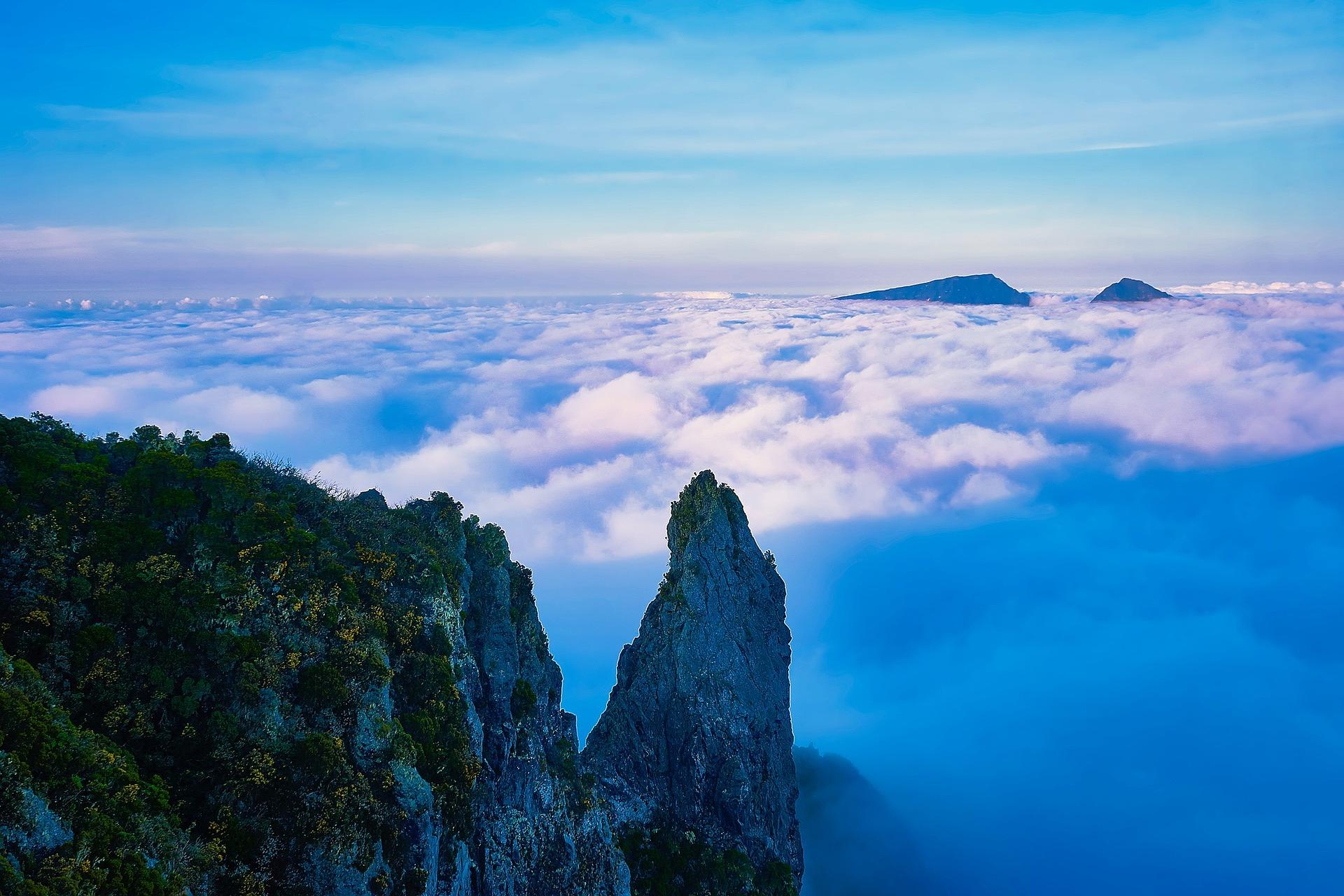Together with Mauritius and Rodrigues, Reunion forms the volcanic Mascarene archipelago, which on the map can be found east of Madagascar in the middle of the Indian Ocean. Here, volcanic activity and erosion have sculpted a landscape so beautiful and unique that it makes one's eyes glaze over. In short, Reunion is a true hidden gem for all mountain lovers.
Known – unknown Reunion
"And where is it?" is the question on the enthusiastic narration of our planned trip. For the small island in the middle of the Indian Ocean is a great unknown to many people (and even some French people, even though Reunion is a French overseas department).
And what makes this mini-island, which can be crossed by car from north to south and from east to west in an hour, so interesting? The jagged green slopes rise steeply upwards, adorned with numerous white ribbons of waterfalls. A trio of collapsed volcanic calderas cling to each other like a trefoil, forming giant natural amphitheatres separated by a two-thousand-foot wall of mountains. Every few years, one of the most active volcanoes on the planet, Piton de la Fournaise, comes to life on the island, and its crater can be reached by climbing up the solidified lava fields.
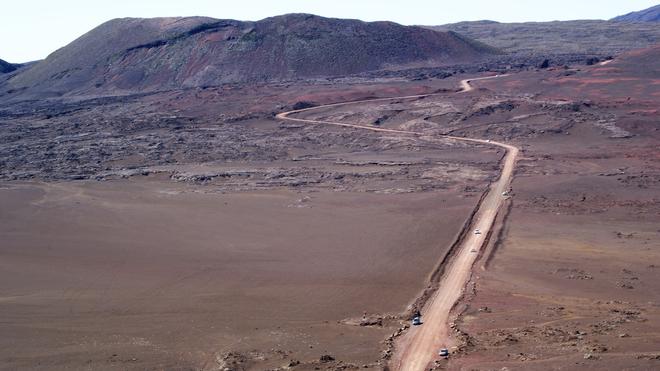
On the south coast, black basalt cliffs bathe in the watery spray of the waves, while the west coast is covered by a belt of white sandy beaches. All this is complemented by a well-marked network of hiking trails, many mountain huts, a pleasantly warm climate and quite European comforts – no vaccinations are needed, drinking water is readily available, etc. And the best part? You'll have this beauty all to yourself in many places!
In volcanic Mordor
A place that few visitors miss is the active volcano Piton de la Fournaise, often referred to by the familiar el Volcan (Vulcan). One of the most active volcanoes in the world, it rises to a height of 2,631m in the south-east of the island and periodically, every couple of years, spews torrents of hot lava from its bowels, which flow down its eastern slopes into the ocean. It is also possible to look directly into the volcano's throat.
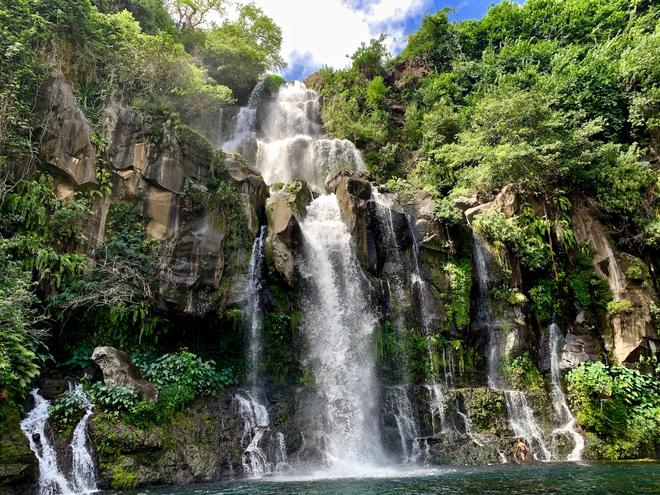
For most people, the climb starts from the car park at the cliff edge of Rempart de Bellecombe (2311m), located 20 km south of the town of Bourg Murat in the centre of the island. The winding road ends below a viewpoint overlooking the volcanic desert of the Plaine des Sables, so the last few kilometres have to be driven on a dirt road full of potholes. It's worth arranging accommodation in the only mountain hut near Vulcan, the Gite du Volcan, so that you can start your ascent to the crater at dawn. The clear skies and distant views in the morning are usually obscured by heavy white clouds from the ocean in the afternoon.
The road to the crater of the Piton de la Fournaise volcano
The seven-kilometre route to the crater itself begins with a descent of about 100 metres from Bellecombe Pass to the bottom of the rock barrier that encircles the volcano in a semicircle to the ocean. Here begins an incredibly vast field of solidified lava, jumping from one jagged lava flow to the next, and one feels almost insignificant in the pitch black sea. The fossilised lava is replaced by loose volcanic debris; the fresher lava flows, only a few decades old, are noticeably darker. From the upper parts of the volcano, the blue surface of the ocean glistens beneath the clouds, with a moonscape running towards it, from which smaller volcanic cones emerge here and there. A perfect picture of destruction.
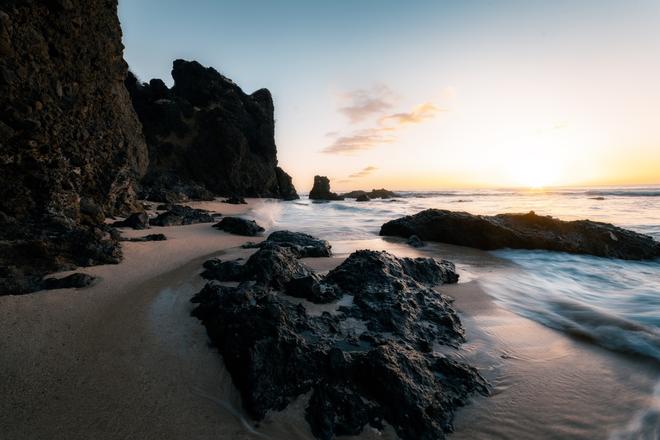
In the past, the entire crater of the volcano could be walked around. But in April 2007, the central crater, almost a kilometre wide, collapsed 300 metres. Now only the viewpoint at Cratere Dolomieu (approx. 2500 m) is accessible, from where you can see the new crater filling up again with solidified lava.
Welcome to Jurassic Park Cirques
Tree ferns, horsetails, endemic mountain tamarinds, exotic flowers, banana trees... In this natural setting, you'll feel like you're walking through the dinosaur era. But since there are no dangerous animals or larger mammals living on the island, there is nothing to worry about when trekking. Except for the altitude.
The most beautiful area for trekking is the area called Cirques – a trio of former volcanoes whose calderas have collapsed into each other to form giant depressions bounded on three sides by a wall of rock. They lie in the interior of the northern part of the island and stick to each other like a trefoil. The point where the three calderas meet is the highest point of the island, Piton des Neiges (3070 m). There are charming little mountain villages in all the calderas, but only two of them – Cilaos and Salazie – are accessible by road, and the wildest and most remote of them – Mafate – can only be reached by foot or helicopter.
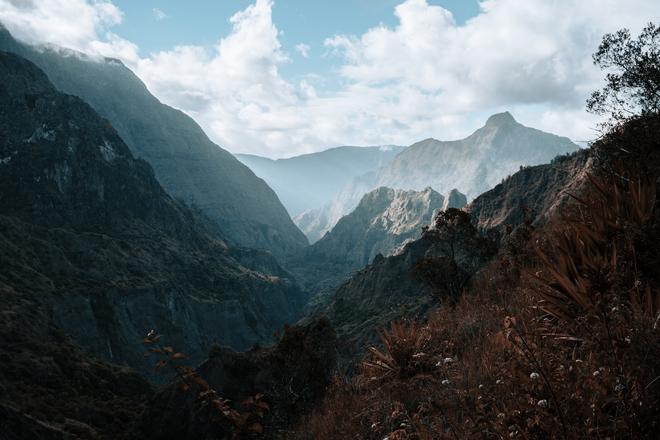
In addition to a number of local trails, there are also three long-distance hiking trails that cross the island, leading through Cirques. GR 1 goes around the summit of Piton des Neiges, passing through all three calderas (56 km, 5 days). GR 2 goes in about eleven stages from north to south across the island – through the area of the impressive collapsed calderas of the Cirques and the active volcano Piton de la Fournaise (140 km, 14 days). GR 3 goes around the villages of the wild caldera Mafate (40 km, 4 days).
